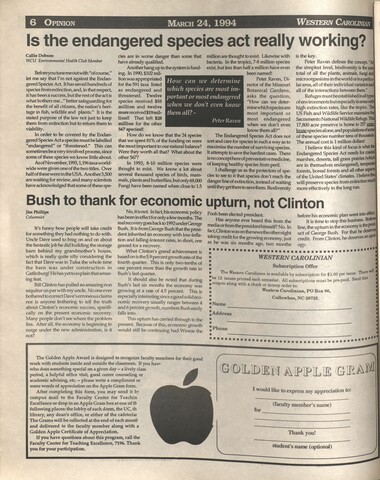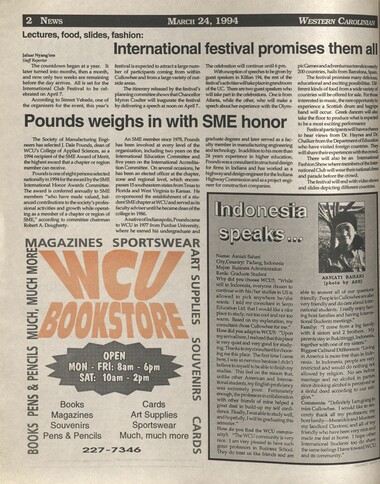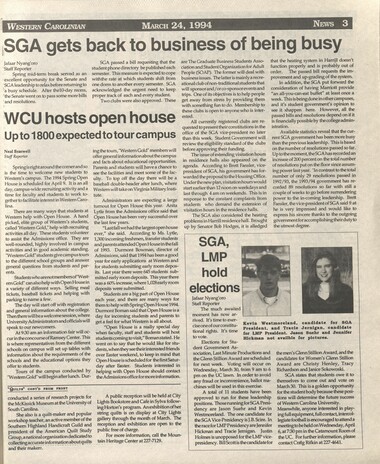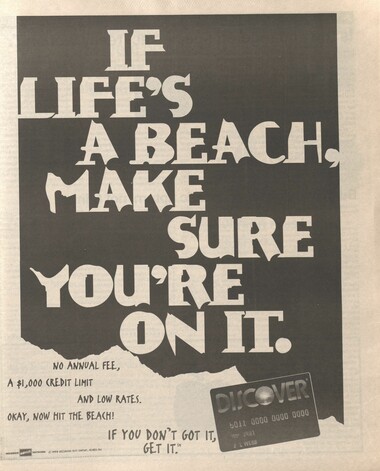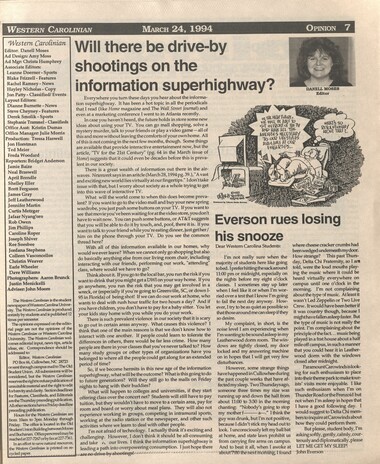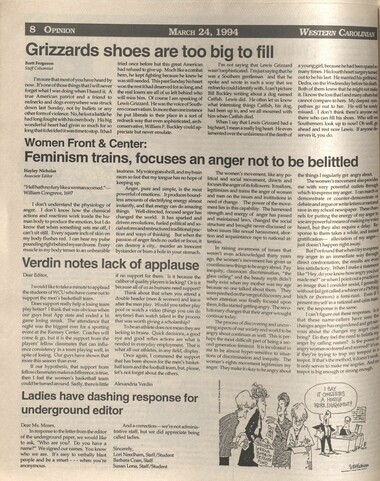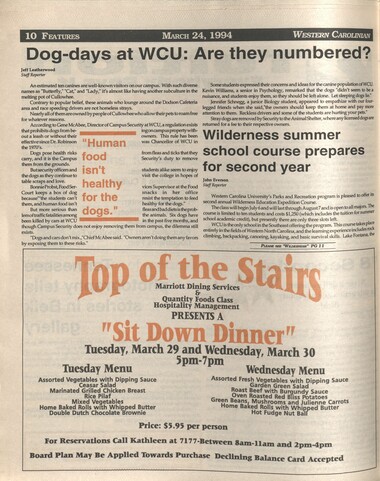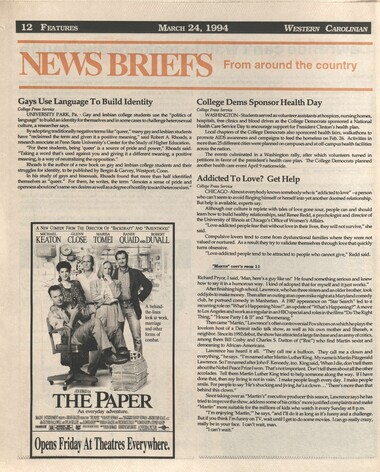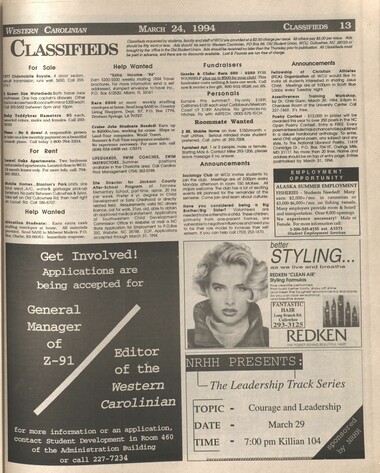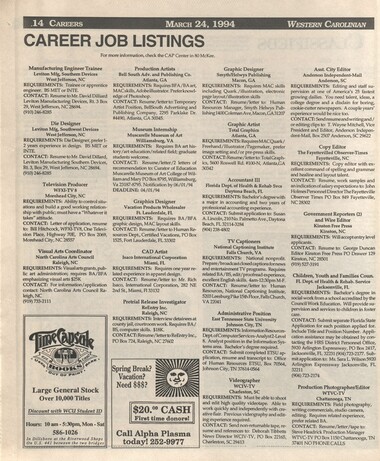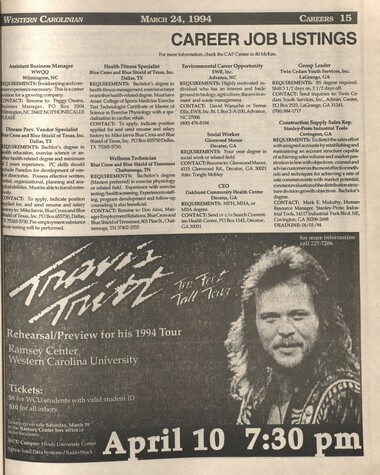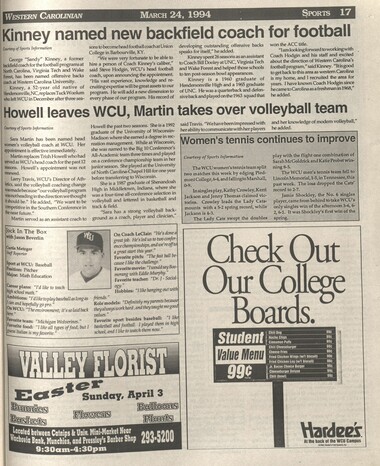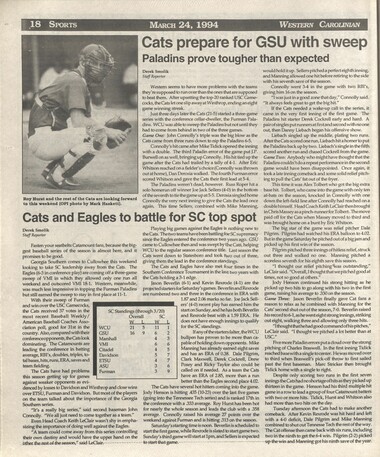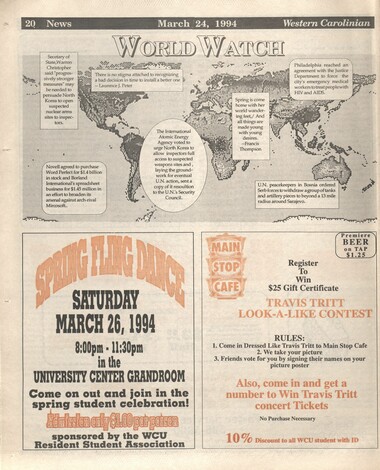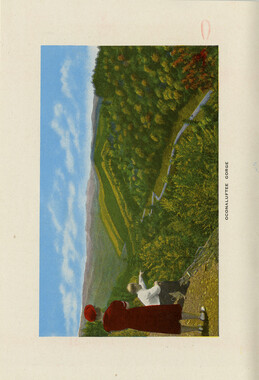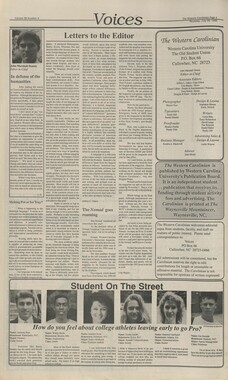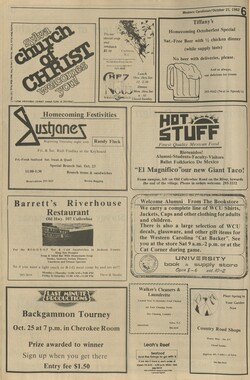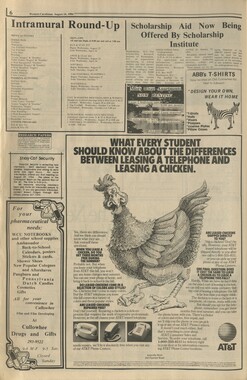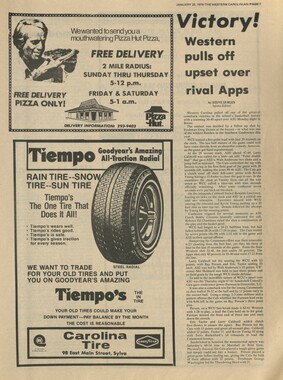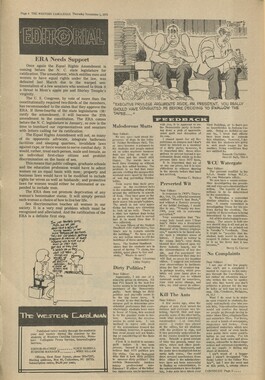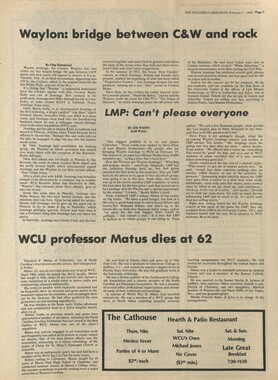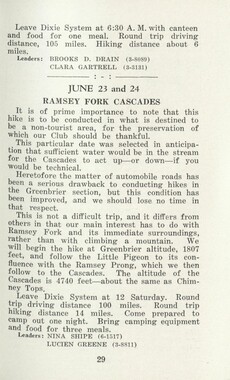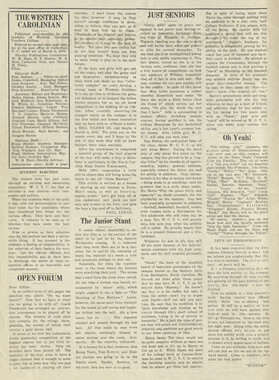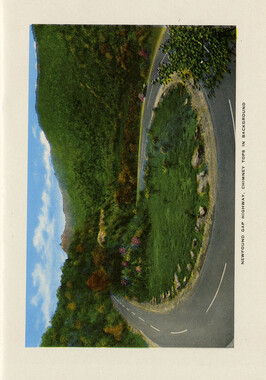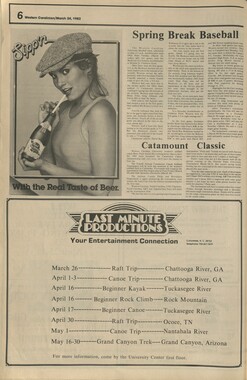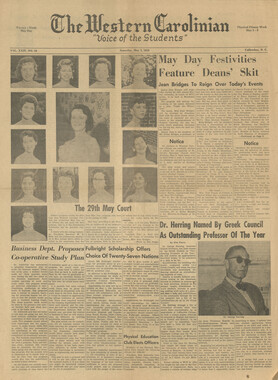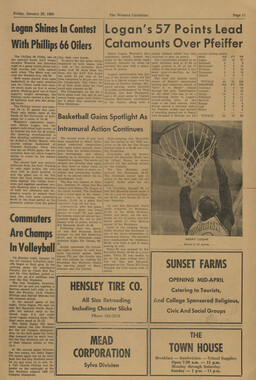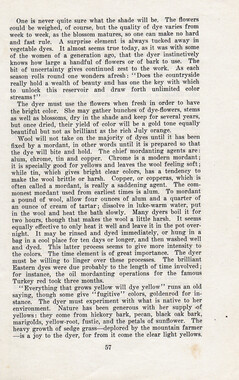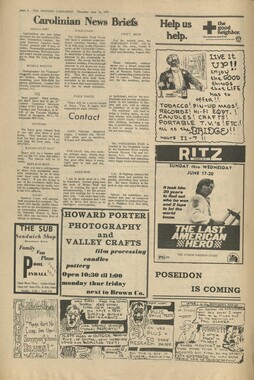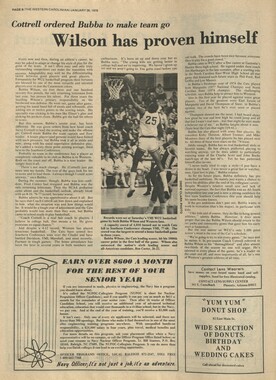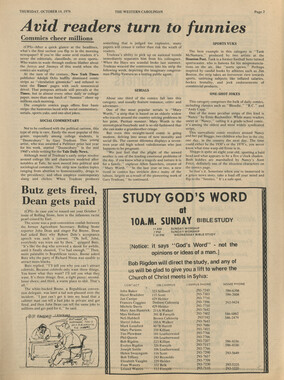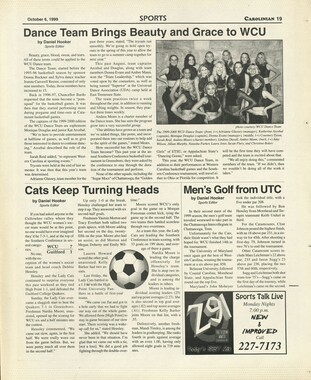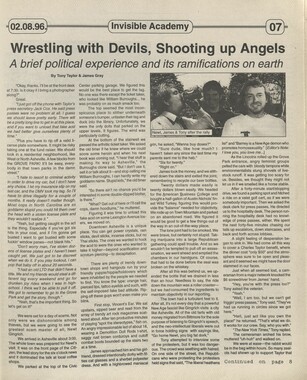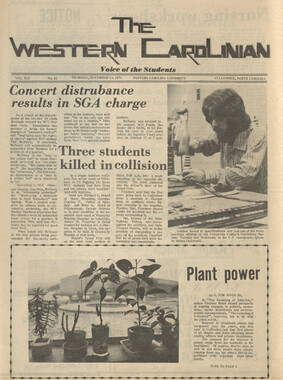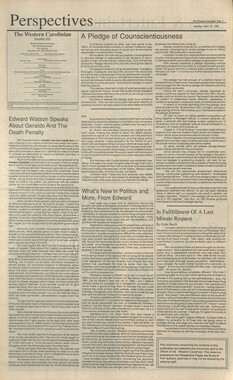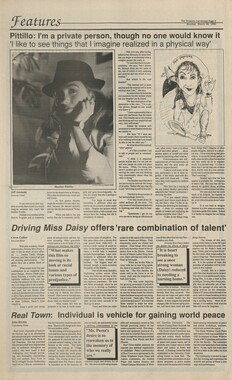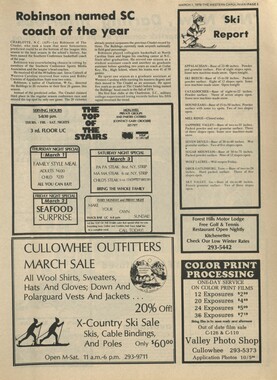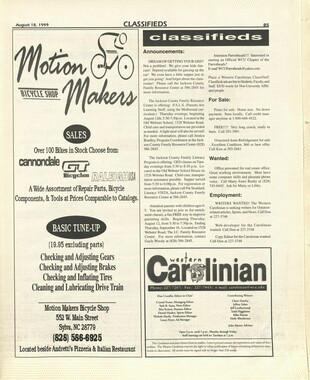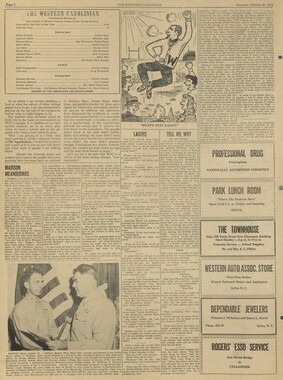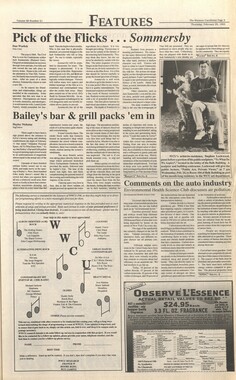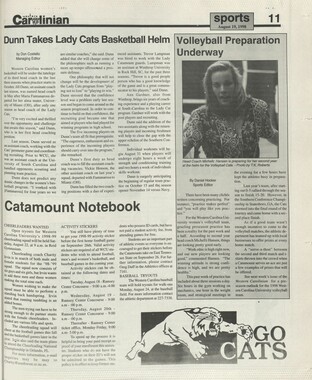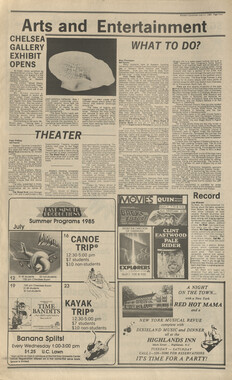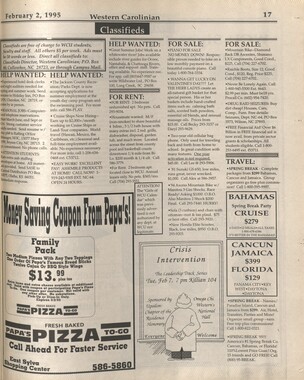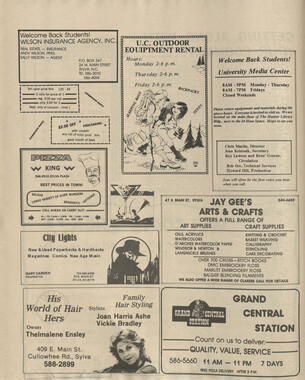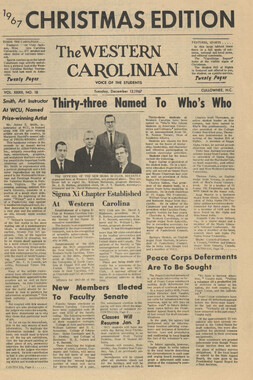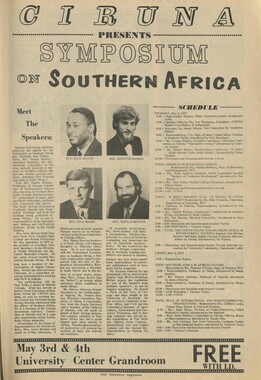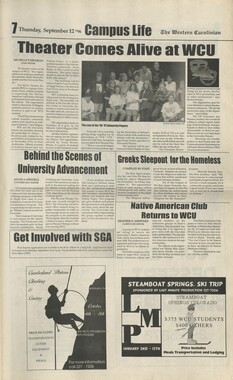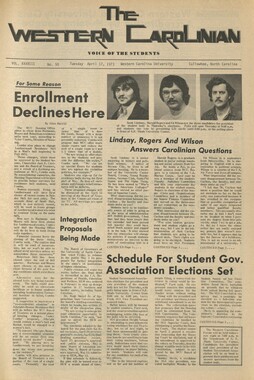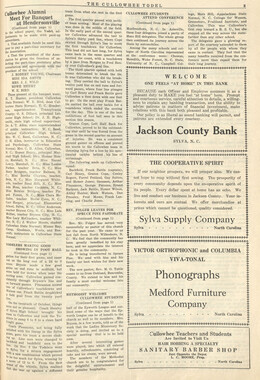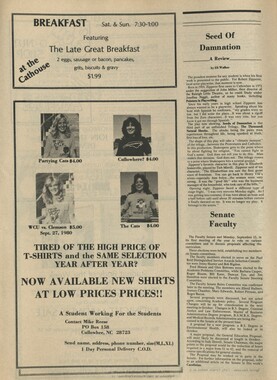Western Carolina University (20)
View all
- Canton Champion Fibre Company (2308)
- Cherokee Traditions (292)
- Civil War in Southern Appalachia (165)
- Craft Revival (1942)
- Great Smoky Mountains - A Park for America (2766)
- Highlights from Western Carolina University (430)
- Horace Kephart (941)
- Journeys Through Jackson (154)
- LGBTQIA+ Archive of Jackson County (85)
- Oral Histories of Western North Carolina (314)
- Picturing Appalachia (6772)
- Stories of Mountain Folk (413)
- Travel Western North Carolina (160)
- Western Carolina University Fine Art Museum Vitreograph Collection (129)
- Western Carolina University Herbarium (92)
- Western Carolina University: Making Memories (708)
- Western Carolina University Publications (2283)
- Western Carolina University Restricted Electronic Theses and Dissertations (146)
- Western North Carolina Regional Maps (71)
- World War II in Southern Appalachia (131)
University of North Carolina Asheville (6)
View all
- Allanstand Cottage Industries (62)
- Appalachian National Park Association (53)
- Bennett, Kelly, 1890-1974 (1388)
- Berry, Walter (76)
- Brasstown Carvers (40)
- Carver, George Washington, 1864?-1943 (26)
- Cathey, Joseph, 1803-1874 (1)
- Champion Fibre Company (233)
- Champion Paper and Fibre Company (297)
- Cherokee Indian Fair Association (16)
- Cherokee Language Program (22)
- Crowe, Amanda (40)
- Edmonston, Thomas Benton, 1842-1907 (7)
- Ensley, A. L. (Abraham Lincoln), 1865-1948 (275)
- Fromer, Irving Rhodes, 1913-1994 (70)
- George Butz (BFS 1907) (46)
- Goodrich, Frances Louisa (120)
- Grant, George Alexander, 1891-1964 (96)
- Heard, Marian Gladys (60)
- Kephart, Calvin, 1883-1969 (15)
- Kephart, Horace, 1862-1931 (313)
- Kephart, Laura, 1862-1954 (39)
- Laney, Gideon Thomas, 1889-1976 (439)
- Masa, George, 1881-1933 (61)
- McElhinney, William Julian, 1896-1953 (44)
- Niggli, Josephina, 1910-1983 (10)
- North Carolina Park Commission (105)
- Osborne, Kezia Stradley (9)
- Owens, Samuel Robert, 1918-1995 (11)
- Penland Weavers and Potters (36)
- Roberts, Vivienne (15)
- Roth, Albert, 1890-1974 (142)
- Schenck, Carl Alwin, 1868-1955 (1)
- Sherrill's Photography Studio (2565)
- Southern Highland Handicraft Guild (127)
- Southern Highlanders, Inc. (71)
- Stalcup, Jesse Bryson (46)
- Stearns, I. K. (213)
- Thompson, James Edward, 1880-1976 (226)
- United States. Indian Arts and Crafts Board (130)
- USFS (683)
- Vance, Zebulon Baird, 1830-1894 (1)
- Weaver, Zebulon, 1872-1948 (58)
- Western Carolina College (230)
- Western Carolina Teachers College (282)
- Western Carolina University (1794)
- Western Carolina University. Mountain Heritage Center (18)
- Whitman, Walt, 1819-1892 (10)
- Wilburn, Hiram Coleman, 1880-1967 (73)
- Williams, Isadora (3)
- Cain, Doreyl Ammons (0)
- Crittenden, Lorraine (0)
- Rhodes, Judy (0)
- Smith, Edward Clark (0)
- Appalachian Region, Southern (2569)
- Asheville (N.C.) (1923)
- Avery County (N.C.) (26)
- Blount County (Tenn.) (161)
- Buncombe County (N.C.) (1672)
- Cherokee County (N.C.) (283)
- Clay County (N.C.) (555)
- Graham County (N.C.) (233)
- Great Smoky Mountains National Park (N.C. and Tenn.) (519)
- Haywood County (N.C.) (3524)
- Henderson County (N.C.) (70)
- Jackson County (N.C.) (4694)
- Knox County (Tenn.) (25)
- Knoxville (Tenn.) (12)
- Lake Santeetlah (N.C.) (10)
- Macon County (N.C.) (420)
- Madison County (N.C.) (212)
- McDowell County (N.C.) (39)
- Mitchell County (N.C.) (132)
- Polk County (N.C.) (35)
- Qualla Boundary (981)
- Rutherford County (N.C.) (76)
- Swain County (N.C.) (2115)
- Transylvania County (N.C.) (270)
- Watauga County (N.C.) (12)
- Waynesville (N.C.) (84)
- Yancey County (N.C.) (72)
- Aerial Photographs (3)
- Aerial Views (60)
- Albums (books) (4)
- Articles (1)
- Artifacts (object Genre) (228)
- Bibliographies (1)
- Biography (general Genre) (2)
- Cards (information Artifacts) (38)
- Clippings (information Artifacts) (191)
- Crafts (art Genres) (622)
- Depictions (visual Works) (21)
- Design Drawings (1)
- Drawings (visual Works) (184)
- Envelopes (73)
- Facsimiles (reproductions) (1)
- Fiction (general Genre) (4)
- Financial Records (12)
- Fliers (printed Matter) (67)
- Glass Plate Negatives (381)
- Guidebooks (2)
- Internegatives (10)
- Interviews (815)
- Land Surveys (102)
- Letters (correspondence) (1013)
- Manuscripts (documents) (618)
- Maps (documents) (177)
- Memorandums (25)
- Minutes (administrative Records) (59)
- Negatives (photographs) (5835)
- Newsletters (1285)
- Newspapers (2)
- Occupation Currency (1)
- Paintings (visual Works) (1)
- Pen And Ink Drawings (1)
- Periodicals (193)
- Personal Narratives (10)
- Photographs (12976)
- Plans (maps) (1)
- Poetry (6)
- Portraits (4533)
- Postcards (329)
- Programs (documents) (151)
- Publications (documents) (2236)
- Questionnaires (65)
- Scrapbooks (282)
- Sheet Music (2)
- Slides (photographs) (402)
- Songs (musical Compositions) (2)
- Sound Recordings (796)
- Specimens (92)
- Speeches (documents) (15)
- Tintypes (photographs) (8)
- Transcripts (322)
- Video Recordings (physical Artifacts) (23)
- Vitreographs (129)
- Text Messages (0)
- A.L. Ensley Collection (275)
- Appalachian Industrial School Records (7)
- Appalachian National Park Association Records (336)
- Axley-Meroney Collection (2)
- Bayard Wootten Photograph Collection (20)
- Bethel Rural Community Organization Collection (7)
- Blumer Collection (5)
- C.W. Slagle Collection (20)
- Canton Area Historical Museum (2110)
- Carlos C. Campbell Collection (282)
- Cataloochee History Project (64)
- Cherokee Studies Collection (4)
- Daisy Dame Photograph Album (5)
- Daniel Boone VI Collection (1)
- Doris Ulmann Photograph Collection (112)
- Elizabeth H. Lasley Collection (1)
- Elizabeth Woolworth Szold Fleharty Collection (4)
- Frank Fry Collection (95)
- George Masa Collection (173)
- Gideon Laney Collection (452)
- Hazel Scarborough Collection (2)
- Hiram C. Wilburn Papers (28)
- Historic Photographs Collection (236)
- Horace Kephart Collection (861)
- Humbard Collection (33)
- Hunter and Weaver Families Collection (1)
- I. D. Blumenthal Collection (4)
- Isadora Williams Collection (4)
- Jesse Bryson Stalcup Collection (47)
- Jim Thompson Collection (224)
- John B. Battle Collection (7)
- John C. Campbell Folk School Records (80)
- John Parris Collection (6)
- Judaculla Rock project (2)
- Kelly Bennett Collection (1407)
- Love Family Papers (11)
- Major Wiley Parris Civil War Letters (3)
- Map Collection (12)
- McFee-Misemer Civil War Letters (34)
- Mountain Heritage Center Collection (4)
- Norburn - Robertson - Thomson Families Collection (44)
- Pauline Hood Collection (7)
- Pre-Guild Collection (2)
- Qualla Arts and Crafts Mutual Collection (12)
- R.A. Romanes Collection (681)
- Rosser H. Taylor Collection (1)
- Samuel Robert Owens Collection (94)
- Sara Madison Collection (144)
- Sherrill Studio Photo Collection (2558)
- Smoky Mountains Hiking Club Collection (616)
- Stories of Mountain Folk - Radio Programs (374)
- The Reporter, Western Carolina University (510)
- Venoy and Elizabeth Reed Collection (16)
- WCU Gender and Sexuality Oral History Project (32)
- WCU Mountain Heritage Center Oral Histories (25)
- WCU Oral History Collection - Mountain People, Mountain Lives (71)
- WCU Students Newspapers Collection (1744)
- Western North Carolina Tomorrow Black Oral History Project (69)
- William Williams Stringfield Collection (2)
- Zebulon Weaver Collection (109)
- African Americans (390)
- Appalachian Trail (35)
- Artisans (521)
- Cherokee art (84)
- Cherokee artists -- North Carolina (10)
- Cherokee language (21)
- Cherokee pottery (101)
- Cherokee women (208)
- Church buildings (170)
- Civilian Conservation Corps (U.S.) (110)
- College student newspapers and periodicals (1830)
- Dams (107)
- Dance (1023)
- Education (222)
- Floods (61)
- Folk music (1015)
- Forced removal, 1813-1903 (2)
- Forest conservation (220)
- Forests and forestry (1184)
- Gender nonconformity (4)
- Great Smoky Mountains National Park (N.C. and Tenn.) (181)
- Hunting (38)
- Landscape photography (25)
- Logging (118)
- Maps (83)
- Mines and mineral resources (8)
- North Carolina -- Maps (18)
- Paper industry (38)
- Postcards (255)
- Pottery (135)
- Railroad trains (71)
- Rural electrification -- North Carolina, Western (3)
- School integration -- Southern States (2)
- Segregation -- North Carolina, Western (5)
- Slavery (5)
- Sports (452)
- Storytelling (244)
- Waterfalls -- Great Smoky Mountains (N.C. and Tenn.) (66)
- Weaving -- Appalachian Region, Southern (280)
- Wood-carving -- Appalachian Region, Southern (328)
- World War, 1939-1945 (173)
Western Carolinian Volume 59 Number 23 (22)
Item
Item’s are ‘child’ level descriptions to ‘parent’ objects, (e.g. one page of a whole book).
-
-
6 Opinion March 24, 1994 Western Carolinian Is the endangered species act really working? Callie Dobson WCU Environmental Health Club Member Beforeyou tune me out with "of course," let me say that I'm not against the Endangered Species Act. It has saved hundreds of species from extinction, and, in that respect, it has been a success, but the rest of the act is what bothers me..." better safeguarding for the benefit of all citizens, the nation's heritage in fish, wildlife and plants." It is the stated purpose of the law not just to keep them from extinction but to return them to viability. In order to be covered by the Endangered Species Act a species must be labelled "endangered" or "threatened." This can sometimes be a very involved process, since some of these species we know little about. Asof November, 1993,1,196 taxa worldwide were given one of the two titles. Over half of these were in theUSA. Another3,500 are waiting for review, and many scientists have acknowledged mat some of these spe cies are in worse clanger than some that have already qualified. Another hang up in the system is funding. In 1990, $102 million was appropriated for the 591 taxa listed as endangered and threatened. Twelve species received $55 million and twelve more received $19mil- lion!! That left $28 million for the other 567 species!! How do we know that the 24 species that we spent 81% of the funding on were the most important to our natural balance? Were they worth all that? What about the other 567? In 1993, 8-10 million species were thought to exist. We know a lot about several thousand species of birds, mammals, plants and butterflies, but only 69,000 Fungi have been named when close to 15 How can we determine which species are most important or most endangered when we don't even know them all? - Peter Raven million are thought to exist. Likewise with bacteria. In the tropics, 7-8 million species exist, but less than half a million have even been named! Peter Raven, Director of the Missouri Botanical Gardens, asks the question, "How can we determine which species are most important or most endangered when we don't even know them all?" The Endangered Species Act does not sort and care for species in such a way as to maximize the number of surviving species. It attempts to save the hardest cases. There isnoconcepthereofpreventativemedicine, of keeping healthy species from peril. I challenge us as the protectors of species to see to it that species don't reach the danger line of extinction, instead of waiting until theygettheretosavethem. Biodiversity is the key. Peter Raven defines the concept. "At the simplest level, biodiversity is the sum total of all the plants, animals, fungi and microorganisms in theworld orinaparticu- lar area, all of their individual variation am all of the interactions between them." Refuges must be established inall types of environments butespeciallyin areas with high extinction rates, like the tropics. The US Fish and Wildlife Service maintains the Sacramento National Wildlife Refuge. This 17,800 acre preserve is home to 257 safe bjate species alone,and populationsofsome of these species number tens of thousands. The annual cost is 1 million dollars! I believe this kind of focus is what the Endangered Species Act needs for coastal marshes, deserts, tall grass prairies (which are in themselves endangered), temperate forests, boreal forests and all other aspects of the United States' climates. I believe this will preserve species from extinction much more effectively in the long run. Bush to thank for economic upturn, not Clinton Jim Phillips Columnist It's funny how people will take credit for something they had nothing to do with. Uncle Dave used to brag on and on about the fantastic job he did building the storage barn behind my grandmother's house, which is really quite silly considering the fact that Dave was in Tulsa the whole time the barn was under construction in Gatlinburg! He has yet to explain thatamaz- ing feat. Bill Clinton has pulled an amazing non sequitur on par with my uncle. No one ever bothered to correct Dave's erroneous claims nor is anyone bothering to tell the truth about Clinton's economic success, specifically on the present economic recovery. Many people don't see where the problem lies. After all, the economy is beginning to surge under the new administration, is it not? No,itisnot. In fact, his economic policy hasbeenineffectforonlyafewmonths. The real recovery goes back to 1992 under George Bush. It is from George Bush that the president inherited an economy with low-inflation and falling-interest rates, in short, one geared for a recovery. What Clinton's grand achievement is based on isthe5.9percentgrowthrateof the fourth quarter. This is only two-tenths of one percent more than the growth rate in Bush's last quarter. It should also be noted that during Bush's last six months the economy was growing at a rate of 4.5 percent. This is especially interesting since a good solid economic recovery usually ranges between 4 and 6 percent growth, numbers Bush easily falls into. This upturn has carried through to the present. Because of this, economic growth would still be continuing had Winnie the Pooh been elected president. before his economic plan went into effect. Has anyone ever heard this from the It is time to stop this business. Bottom media or from the president himself? No. In line, the upturn in the economy is the pro* fact,aintonwasonthenewstheothernight uct of George Bush. For that he deserv taking credit for the growing economy, just credit. From Clinton, he deserves an apo - as he was six months ago, two months ogy. WESTERN CAROLINIAN m ■ Subscription Offer ■ The Western Carolinian is available by subscription for $1.00 per issue. There J be 12 issues printed each semester. All subscriptions must be pre-paid. Send this . coupon along with a check or money order to: " Western Carolinian, PO Box 66, I Cullowhee, NC 28723. ■Name ■ — B Address will i I Phone The Golden Apple Award is designed to recognize faculty members for their good work with students inside and outside the classroom. If you hav who does something special on a given day - a lively class period, a helpful office visit, good career counseling or academic advising, etc - please write a compliment or some words of appreciation on the Apple Gram form. After completing this form, you may send it bi campus mail to the Faculty Center for Teachin Excellence or drop in an Apple Gram box at one of th following places: the lobby of each dorm, the UC, th library, any dean's office, or either of the cafeteria: The Grams will be collected at the end of each montl and delivered to the faculty member along with a Golden Apple Certificate of Appreciation. If you have questions about this program, call the Faculty Center for Teaching Excellence, 7196. Thank you for your participation. ©©LID1N AMPLIE ©KA^1 I would like to express my appreciation to: for (faculty member's name) Thank you! student's name (optional)
Object
Object’s are ‘parent’ level descriptions to ‘children’ items, (e.g. a book with pages).
-
The Western Carolinian is Western Carolina University's student-run newspaper. The paper was published as the Cullowhee Yodel from 1924 to 1931 before changing its name to The Western Carolinian in 1933.
-
